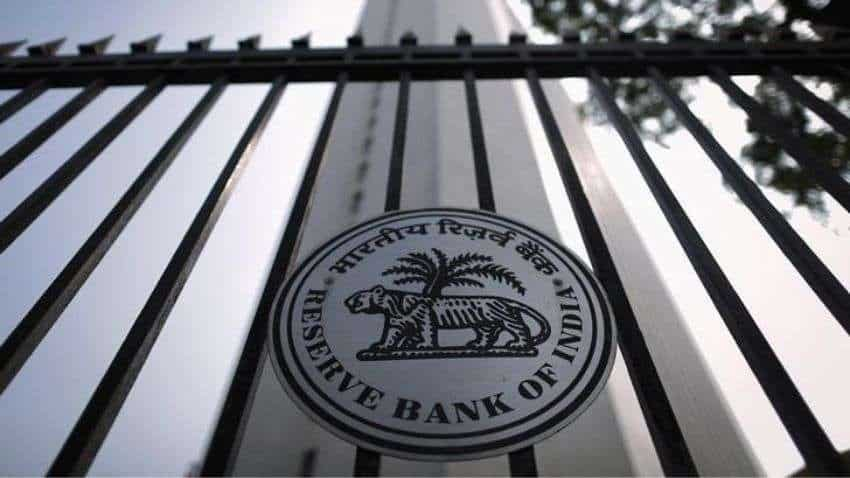RBI policy rate likely to remain unchanged till April, says BofA in a report; MPC meet between February 7-9
RBI is unlikely to change key policy rates next week according to US brokerage firm Bank of America Securities.

Reserve Bank of India (RBI) is unlikely to change key policy rates next week according to US brokerage firm Bank of America Securities. Its stance is a departure from its peers. It is on the basis that India's growth-focused and Capex-driven fiscal expansion could create huge price pressures and interest rate risk in the future, PTI reported.
Despite stronger fiscal support and faster rate hikes expected from the US Federal Reserve, the brokerage has maintained its view that the RBI would only adopt a gradual policy normalisation route for now.
BofA analysts believe the Monetary Policy Committee (MPC) will leave rates steady on February 9 when the central bank releases its final policy review of the fiscal year and will implement modest tightening measures, citing the Budget's priority for growth over budget reduction.
RBI's rate-setting body or the MPC, will start deliberations on Monday and announce policy decisions on Wednesday (February 9).
To keep inflation in check, nearly all major central banks are raising interest rates.
There has been a significant increase in bond rates following the Budget 2022, the report said.
According to PTI, even though bond rates have been trending upward for months, the main repo rate has been at 4% since May 2020, a new all-time low.
The brokerage sees the entire domestic and global situation as unfavourable for the bonds market unless certain actions are taken to stabilise yields, which have already gone beyond 2019 levels and are sniffing at 6.9% after the Budget unveiled record borrowing plans for the upcoming fiscal year, PTI mentioned.
According to PTI, the market was anticipating a 25-bps reverse repo tightening. Its assumption was confirmed when the Budget unveiled a record borrowing plan of Rs 14.95 lakh crore in gross borrowing and Rs 11.6 lakh crore in net borrowing (much higher than BofA estimates of Rs 13 lakh crore and Rs 9.6 lakh crore).
Although the fiscal deficit is forecast to shrink from 6.9% in FY22 (up 10bps from the revised estimate) to a planned 6.4 percent in FY23, the brokerage anticipates preliminary actuals for FY22 to come in at 6.8% and 6% next fiscal, according to a note released on Friday by BofA.
The key highlight of the FY23 Budget is the massive Capex push at the cost of fiscal consolidation. While typically one expects the fiscal expansion to be inflationary, the brokerage believes it will not be so because of the positive components of the spending plan.
Revenue spending, net of interest payments and subsidies, is forecast to increase by just 1% in FY23, while capital expenditures are predicted to increase by 24%, implying more supply-side spending rather than a large demand boost, and hence no severe inflation pressure, as per PTI report.
Given all of this, the RBI is expected to leave rates steady next Wednesday, despite the fact that the epidemic is still ongoing.
According to BofA, the first tightening move would likely involve lifting the reverse repo rate by 40 bps in March/April, switching to a neutral position in April, and delivering the first repo rate rise in June, taking it to 4.75 % by December 2022 and 5% by March 2023.
The RBI has been a seller of bonds for several months, after being a substantial buyer in the first half, resulting in a large demand-supply gap and a surge in rates, PTI mentioned.
It did so expect the government will allow the domestic bonds into international indices but it has not done so yet because of an impasse over taxation issues, which would have brought in at least USD 10 billion in FY22 and USD 30 billion next fiscals.
However, given the government's more expansionary budgetary strategy, the RBI, as the government's debt manager, would have to intervene with liquidity-neutral OMOs to keep rates stable as demand in auctions evaporate.
Get Latest Business News, Stock Market Updates and Videos; Check your tax outgo through Income Tax Calculator and save money through our Personal Finance coverage. Check Business Breaking News Live on Zee Business Twitter and Facebook. Subscribe on YouTube.
RECOMMENDED STORIES

SBI 444-day FD vs PNB 400-day FD: Here's what general and senior citizens will get in maturity on Rs 3.5 lakh and 7 lakh investments in special FDs?

Power of Compounding: How long it will take to build Rs 5 crore corpus with Rs 5,000, Rs 10,000 and Rs 15,000 monthly investments?

Looking for short term investment ideas? Analysts suggest buying these 2 stocks for potential gain; check targets

Small SIP, Big Impact: Rs 1,111 monthly SIP for 40 years, Rs 11,111 for 20 years or Rs 22,222 for 10 years, which do you think works best?

SCSS vs FD: Which guaranteed return scheme will give you more quarterly income on Rs 20,00,000 investment?
06:30 PM IST









 Maharashtra will play key role in achieving India's $5 trillion economy goal: Minister Aditi Tatkare
Maharashtra will play key role in achieving India's $5 trillion economy goal: Minister Aditi Tatkare India's GDP growth to pick up in third quarter compared to first half of FY25: ICRA report
India's GDP growth to pick up in third quarter compared to first half of FY25: ICRA report GST collection grows 9% to Rs 1.87 lakh crore in October
GST collection grows 9% to Rs 1.87 lakh crore in October IMF says India's GDP growth to moderate to 7% in 2024 and 6.5% in 2025
IMF says India's GDP growth to moderate to 7% in 2024 and 6.5% in 2025  India poised to be third largest global economy by 2030, rising population presents challenges: S&P
India poised to be third largest global economy by 2030, rising population presents challenges: S&P